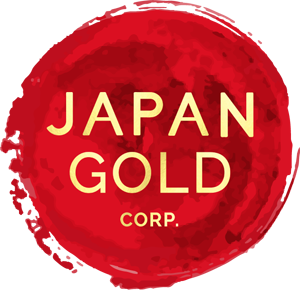Exploration Potential
The Hakuryu Project contains the Motoyama and Fujishima workings that lie in the southern segment of the Konomai gold-silver vein system. These historic mines produced more than 770 Koz of gold and 7.6 Moz of silver2. The great depth extents of ore in the major veins of the Konomai vein system (e.g., 560 m in No. 5 vein) supports the depth potential for bonanza grades in the project area. Some of the Konomai-related vein swarms have only been exploited to shallow levels, and some have yet to be drill-tested. Post-mineral cover sequences exist in the licence block, which may hide portions of the known vein deposits and conceal yet to be discovered lodes.
The exploration potential of the project is high, given the gold-rich character and thickness of the known veins; the presence of lattice-textured quartz (indicative of boiling zones and associated metal deposition); multiple phases of quartz-chalcedony-adularia veins, breccias and stockworks; and the relatively high gold-silver ratios of the Motoyama veins. The common occurrence of bonanza grades (40 g/t Au) from colloform-banded quartz-adularia veins within fault intersections or along easterly- to east-northeasterly-trending tensional structures in the Fujishima and Motoyama mines bode well for future exploration.
Desktop studies by Japan Gold of historical Japanese geological data has highlighted the location of major vein structures located within the Hakuryu Project. Extensions of these mineralized structures both laterally and vertically represent priority targets. Hishikari lode analogies are valid at Hakuryu, which has a similar geological setting that is characterized by near-surface structural domes of competent-brittle basement rocks that are overlain by more ductile, volcanic and volcaniclastic rocks. In addition, the presence of potential sinter and surficial eruption-breccias indicate significant depth potential. Whilst, high-grade fissure veins are deemed priority targets, the potential for sufficient concentrations of stockwork veins (e.g., Fujishima) indicate potential for near-surface, bulk-tonnage targets.
Japan Gold has proposed a two-stage exploration program at Hakuryu. The early-phase, low-impact work program includes detailed Bulk Leach Extractable Gold (BLEG) sampling of streams, geological mapping and geochemical rock sampling, grid soil sampling and ground CSAMT resistivity mapping, and spectral analysis of rock samples pertaining to alteration mapping. The second phase will include drilling of six or more holes (1,500 m) on defined targets using man-portable diamond drill rigs once the Prospecting Rights Licenses are granted.

